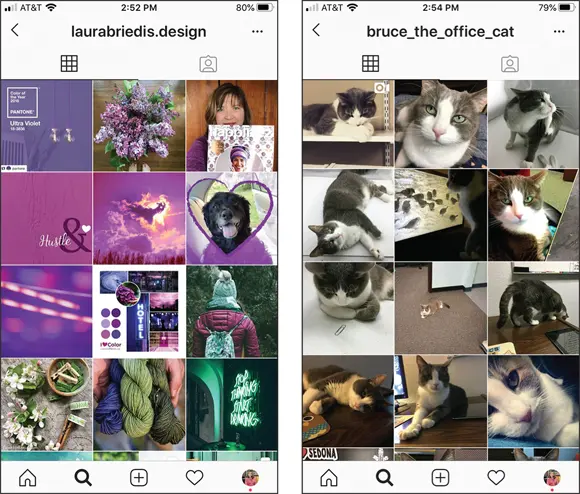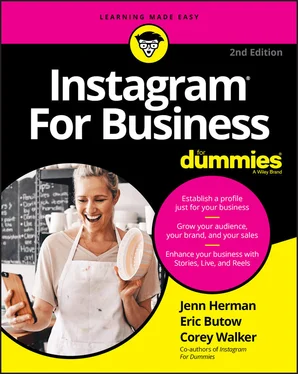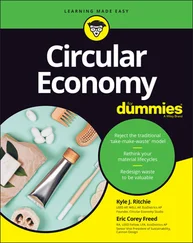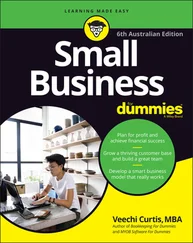As an object that's easily associated with the product or service, such as the smoking wine bottle from Smoking Gun Wines (see Figure 3-1, left).
As an abstract symbol that isn’t obviously related with the product or service, such as the symbol that the Marketing Specialist uses with the company name (see Figure 3-1, center).
As a wordmark logo, in which the name of the business is the logo set in a consistent font and color, such as the Jenn's Trends logo (see Figure 3-1, right).

FIGURE 3-1:These logo types illustrate an easily associated product or service (left), an abstract symbol (center), and a wordmark logo (right).
The company's color palette, brand voice, values and, of course, brand name should all be integrated with the logo. A professional graphic designer can work with you to select colors, advise on fonts that enhance your brand voice, and assist in drawing or selecting visual objects to represent your brand. A graphic designer is also familiar with the different file types necessary for print versus online and should provide the logo in several formats for different uses. We recommend that you use a professional for this instead of creating a logo on your own.
After your logo is created, you’ll likely have one or two colors established with your brand. Next, develop a fuller color palette of complementary colors that you can use in your marketing content. Remember to consider your brand voice when selecting these colors. Most colors illicit a mood (for example, blue is calming and red can mean anger), so do some research or have your graphic designer help create a full color palette when he or she develops your logo.
Next, focus on creating a consistent style for your images. Choices for your images can vary by using the following:
Photography, illustrations, videos, or any combination thereof: In Figure 3-2, left, @kailochic uses photography exclusively as its Instagram style. In Figure 3-2, center, @ahrynscott uses video as its style.
Text overlays on all, some, or no images: In Figure 3-2, right, @mollymarshallmarketing uses text overlays on many of her images.© Kara Whitten (left), Ahryn Scott (middle), and Molly Marshall Marketing (right) FIGURE 3-2:Instagram business accounts often showcase one image style, such as photography (left), videos (middle), or text overlays on images (right).
Only certain colors: @laurabriedis.design uses purple and green as the dominant colors in all the images chosen for her Instagram style, as you can see in Figure 3-3, left.
Only certain subject matter: In Figure 3-3, right, @bruce_the_office_cat features one cat hanging around the office as the main subject in all its images.

© Laura Briedis (left), ©Graphics and More (right)
FIGURE 3-3:Instagram business accounts often stick to a color scheme (left), or one subject matter (right).
By setting your business goals, assembling your team (even if that team is just you), determining your brand voice, and envisioning your look, you've provided a good foundation. Now you're ready to start thinking about your posts. Read on to find out how to find post ideas.
If you’ve completed the steps outlined earlier in this chapter, you can now get down to the fun part: finding post ideas! Researching your competition, deciding on a post type, and creating a content calendar are covered next to keep you on the path to an awesome Instagram page!
Researching your competition
Chances are you already have a good idea about who your competition is offline, especially if your business serves customers locally. If you have several business names to research, finding them on Instagram is fairly easy if they each have an account.
Here are two easy ways to find the Instagram accounts of your competitors:
Go to their websites and see whether they have a link to their Instagram accounts. If so, click the link or Instagram icon.
Go to Instagram directly and click the magnifying glass at the bottom of the page to display the Search field. Then tap in the Search field and type the business name (see Figure 3-4) and see whether the business appears. Tap the name to go to the account.
 If you're using the second research method, several accounts might have similar names. If you can't distinguish which one is the correct account, use the first method to verify that you've found the correct one.
If you're using the second research method, several accounts might have similar names. If you can't distinguish which one is the correct account, use the first method to verify that you've found the correct one.

FIGURE 3-4:Type a business name in the Search field, and look for its Instagram account in the list that appears.
After you locate a competitor's Instagram account, look at its profile page. Some businesses take more care with their profile page than others. Ask yourself the following:
Does the profile page have an easily identifiable username?
Is the account set up as a business account? (Email or Contact buttons are displayed on business accounts, as shown in Figure 3-5.)
Does the page explain what the business does in a simple way?
Does the business include a link to its website or another resource?
Are photos, images, and videos used in a cohesive way?
Does the page have an Instagram story running?
Look at what your competitor has done. Can you learn any lessons, good or bad, for your own profile? For more information about creating a winning profile, see Chapter 2.
Next, tap the most recent post that the competitor’s account posted. Take note of the image and caption. Does the post
Have an intriguing image, video, or photo?
Use text overlays that might include a quote, phrase, or statistic?
Use filters? If so, is one filter used consistently?
Have a caption? If so, does it make you want to know more?
Use hashtags? If so, how many?
Go through this set of questions with several of your competitor’s posts. Note which of them received the highest engagement (most likes and comments). Also note the posts that received low engagement.
If you'd like to get more technical, set up an Excel spreadsheet using the preceding questions as column headings and note similarities between winning and losing posts. Repeat the process with other competitors. Then use the information to craft posts that are more attractive to your target audience.
 This process doesn't need to be restricted to competitor research. Feel free to see what other brands are doing successfully on Instagram and determine whether their techniques can be translated to your business.
This process doesn't need to be restricted to competitor research. Feel free to see what other brands are doing successfully on Instagram and determine whether their techniques can be translated to your business.

FIGURE 3-5:A business profile can display buttons for Contact or Email, and other action items.
If you did the research described in the last section, you’ll have a good idea of what content is working (and what’s not) for your competitors and other brands. Now that you have the data you need, plus the work you’ve done on your brand, you're ready to go!
Читать дальше



 If you're using the second research method, several accounts might have similar names. If you can't distinguish which one is the correct account, use the first method to verify that you've found the correct one.
If you're using the second research method, several accounts might have similar names. If you can't distinguish which one is the correct account, use the first method to verify that you've found the correct one.












